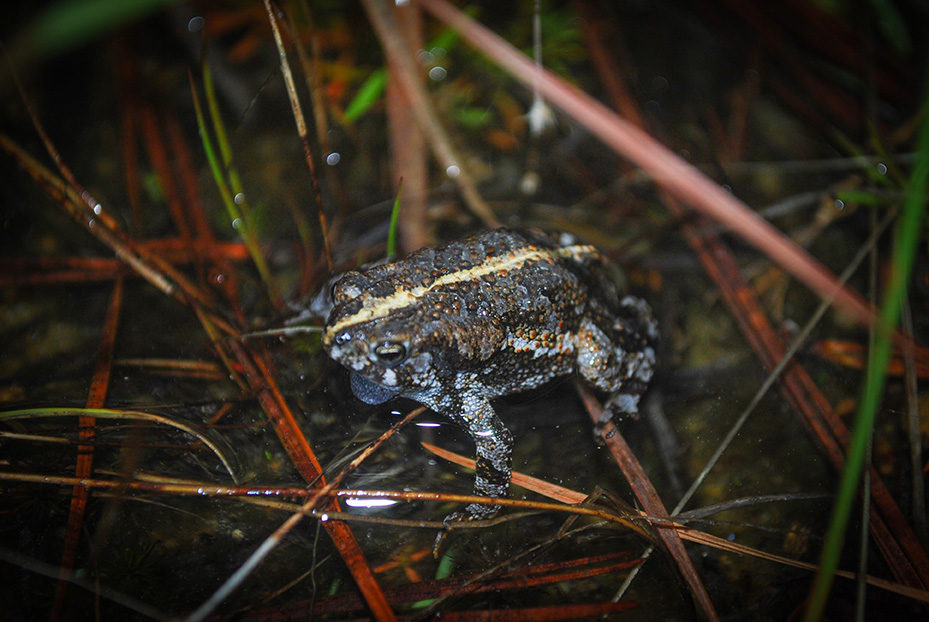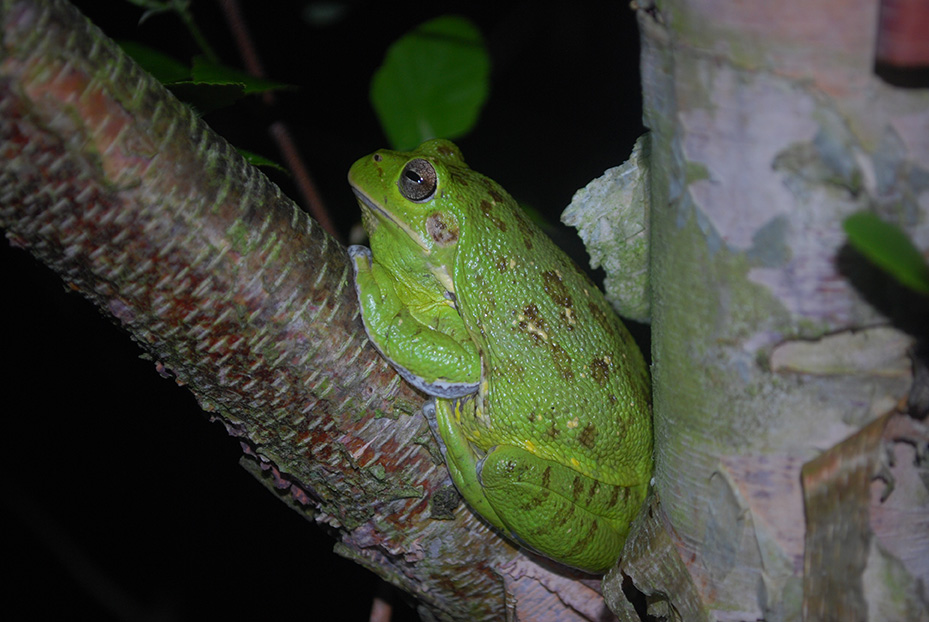
 Department of Conservation and Recreation
Department of Conservation and Recreation
Conserve. Protect. Enjoy.
 Department of Conservation and Recreation
Department of Conservation and Recreation
By Julie BuchananPosted March 19, 2021
 Barking treefrog (Hyla gratiosa). Photo by Irvine T. Wilson.
Barking treefrog (Hyla gratiosa). Photo by Irvine T. Wilson.
Frogs are among the most diverse animals, with more than 7,000 species worldwide. The presence of frogs is often an indicator of the health of the natural environment. They're vital to the food web as an important source of food for many other animals. However, across the globe, frogs are threatened by habitat loss, pesticide use, disease and climate change.
It's estimated that half of the world's frog species are imperiled.
Zoologists with the Virginia Natural Heritage Program track two state-rare frogs: the barking treefrog (Hyla gratiosa) and the oak toad (Bufo quercicus). Both breed primarily after heavy spring and summer rains in temporary or semi-permanent ponds.
The oak toad’s habitat is confined to Southeast Virginia. It's the smallest toad found in the state, and its mating call is a high-pitched whistle-like sound.
 Oak toad (Bufo quercicus). Photo by Dr. Steven M. Roble.
Oak toad (Bufo quercicus). Photo by Dr. Steven M. Roble.
The range of the barking treefrog also includes Southeast Virginia but extends west into the southern Piedmont. It's the largest treefrog in Virginia with a mating sound that resembles a barking dog. The barking tree frog has been documented in new counties in the past decade, which could be a sign that the species is expanding its range.
 Barking treefrog (Hyla gratiosa). Photo by Dr. Steven M. Roble.
Barking treefrog (Hyla gratiosa). Photo by Dr. Steven M. Roble.
There are several historical records for barking treefrog from Chesterfield County, near Pocahontas State Park, but no records in more than 40 years. Credible reports supported by photos or call recordings are welcome.
Here are some tips on how we can help frogs.
Plant native plants.
Native plants provide habitat for the insects frogs need for food. Use the Virginia Native Plant Finder when deciding what to plant.
Leave fall leaves on the ground.
Fallen leaves can provide a winter habitat for terrestrial frog species.
Eliminate or reduce the use of pesticides in gardens and yards.
When it rains, these chemicals can run off and contaminate frog habitats.
Never release pet frogs (or any animal) into the wild.
Frogs in the pet trade could carry disease or deadly fungus that could spread to native frog populations.
Continue to educate yourself and others about frogs.
The Virginia Department of Wildlife Resources offers a wealth of information about frogs, and so does the Virginia Herpetological Society.
DCR Virginia Natural Heritage Program Staff Zoologist Dr. Steven M. Roble provided information for this post.
Categories
Natural Heritage

